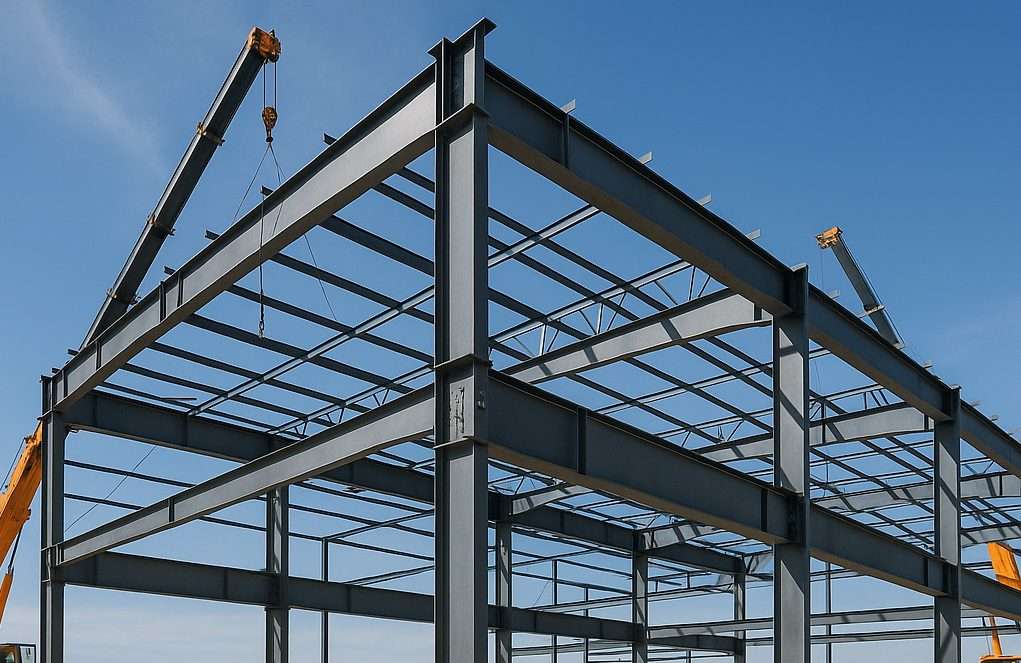In the evolving landscape of commercial and industrial development, steel buildings have emerged as the go-to solution for companies seeking durability, scalability, and efficiency. Whether you’re in manufacturing, logistics, warehousing, or energy, industrial steel building construction offers a cost-effective, long-lasting, and environmentally friendly approach to building infrastructure that meets modern demands.
What Is an Industrial Steel Building?
An industrial steel building is a structure primarily constructed using steel for its framework and often for its exterior as well. These buildings are designed to serve various industrial purposes such as:
- Warehouses
- Distribution centers
- Manufacturing plants
- Workshops and fabrication facilities
- Power plants
- Waste processing facilities
- Aircraft hangars
Unlike traditional construction that uses wood or concrete as the primary material, steel buildings rely on pre-engineered metal components, offering a level of strength and customization that is difficult to achieve otherwise.

Advantages of Industrial Steel Buildings
1. Strength and Durability
Steel is one of the strongest construction materials available. It can withstand extreme weather conditions, heavy loads, and even seismic activity better than most traditional materials. Industrial operations often involve heavy machinery, vibration, and high-impact activities—making steel an ideal choice.
2. Fast Construction Timeline
One of the standout benefits of steel buildings is their rapid erection. Many components are pre-engineered and fabricated off-site, which minimizes on-site labor and significantly speeds up construction. In some cases, steel buildings can be completed 30–50% faster than traditional buildings.
3. Cost-Effective
While the upfront cost of steel can be comparable to traditional materials, the long-term cost savings are substantial. With less maintenance, longer life cycles, and lower insurance premiums due to fire resistance, steel buildings offer a strong return on investment.
4. Sustainability
Steel is 100% recyclable, making it one of the most environmentally sustainable building materials. Pre-engineered steel buildings also produce less waste on-site and can incorporate energy-efficient insulation systems and solar panels easily.
5. Customizability and Scalability
Modern industrial steel buildings are highly customizable. From clear-span designs (without internal columns) to multi-level configurations, steel offers the flexibility needed to accommodate various operational layouts. Expansion is also easier—additional bays can be added with minimal structural disruption.
Key Components of an Industrial Steel Building
1. Primary Framing
The primary frame typically consists of rigid steel I-beams that provide the core structural support. These beams are engineered based on the building’s load requirements.
2. Secondary Framing
These include purlins (roof support), girts (wall support), and eave struts that distribute loads and support insulation and paneling.
3. Roof and Wall Panels
Roof and wall cladding are made of corrugated steel panels, often coated with rust- and weather-resistant finishes. These can come in various thicknesses depending on performance and insulation needs.
4. Bracing Systems
Steel cables or rods are used to provide lateral stability, preventing the structure from swaying or distorting during high winds or seismic events.
5. Insulation and Ventilation
Proper insulation is critical for maintaining interior climate control in industrial buildings. Options include fiberglass, rigid foam, or insulated metal panels. Adequate ventilation (natural or mechanical) is also essential, especially in manufacturing environments.
The Industrial Steel Building Construction Process
1. Planning and Design
Before construction begins, the planning phase includes:
- Site evaluation
- Zoning and permitting
- Structural and architectural design
- Load calculations (wind, snow, seismic)
- Selection of building accessories (doors, windows, HVAC)
Software like CAD and BIM (Building Information Modeling) is often used to design every detail of the structure before materials are ordered.
2. Fabrication
Once designs are approved, the structural steel components are fabricated off-site in a factory setting. This ensures high precision, minimizes material waste, and keeps construction schedules on track.
3. Site Preparation
While fabrication is underway, the job site is prepared—this includes grading, excavation, utility installation, and laying the foundation (typically a concrete slab or pier system).
4. Erection
This is where the building starts to take shape. The steel frame is assembled first, followed by secondary framing, wall and roof panels, insulation, and finally interior systems.
5. Interior Build-Out
Depending on the intended use, this phase includes:
- Electrical systems
- Plumbing
- HVAC installation
- Office build-outs
- Specialized equipment installation
Design Considerations for Industrial Steel Buildings
1. Clear Span vs. Multi-Span
Clear span designs eliminate internal columns, maximizing usable floor space—ideal for warehouses or airplane hangars. Multi-span may be more economical for extremely large structures.
2. Height Requirements
Crane systems, tall shelving, and industrial machinery often demand higher ceilings. Steel buildings can easily be designed to accommodate clear heights of 30+ feet.
3. Load-Bearing Requirements
Manufacturing facilities may require additional structural support for heavy machinery or mezzanine floors. Load specifications must be calculated early in the design phase.
4. Climate and Location
Buildings in snow-prone or seismic regions must be designed with appropriate load considerations. Wind loads are also a critical factor in coastal or storm-prone areas.
5. Fire Rating and Safety
While steel is fire-resistant, insulation and cladding materials must also meet local fire code requirements. Fire suppression systems, ventilation, and emergency access should be integrated into the design.
Common Uses of Industrial Steel Buildings
- Automotive Shops and Assembly Lines: Steel buildings can be outfitted with rolling doors, overhead cranes, and inspection pits.
- Food Processing Plants: Hygienic interior panels and proper drainage systems make them ideal for food-grade operations.
- Cold Storage and Distribution: Insulated metal panels allow for seamless cold room integration.
- Recycling and Waste Facilities: The strength of steel supports heavy-duty equipment and high-impact activities.
- Data Centers: Secure, expandable, and climate-controlled environments make steel buildings a reliable choice.
Trends in Industrial Steel Building Construction
1. Green Building Integration
LEED-certified steel buildings are on the rise, with more companies opting for solar panels, daylighting systems, and advanced HVAC integration.
2. Hybrid Construction
Some industrial buildings are using hybrid construction, combining steel framing with tilt-up concrete walls or wood interiors for aesthetic or functional reasons.
3. Smart Building Systems
Integration of IoT (Internet of Things) for monitoring energy usage, predictive maintenance, and automated climate control is becoming more common in industrial steel structures.
4. Modular and Prefab Systems
Some steel building systems now include modular office spaces, restrooms, or mezzanines that can be installed in hours instead of days.
Final Thoughts
Industrial steel building construction represents the future of industrial infrastructure. With its unmatched strength, speed, cost-efficiency, and sustainability, it’s no wonder that businesses of all sizes are turning to steel for their facility needs.
Whether you’re planning a new warehouse, upgrading your manufacturing plant, or expanding your logistics operations, a well-designed steel building can provide the performance and flexibility your business demands—both today and into the future.
